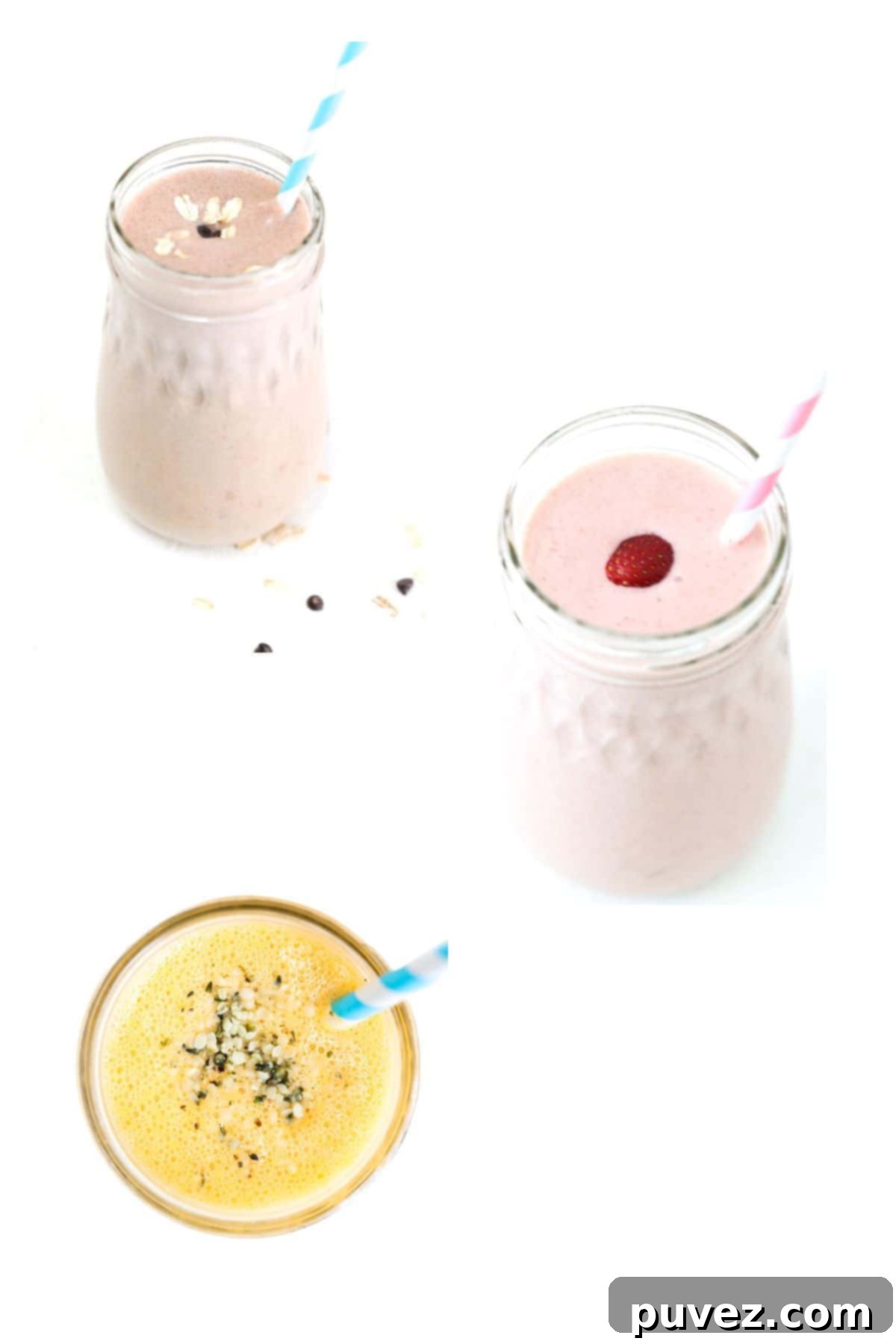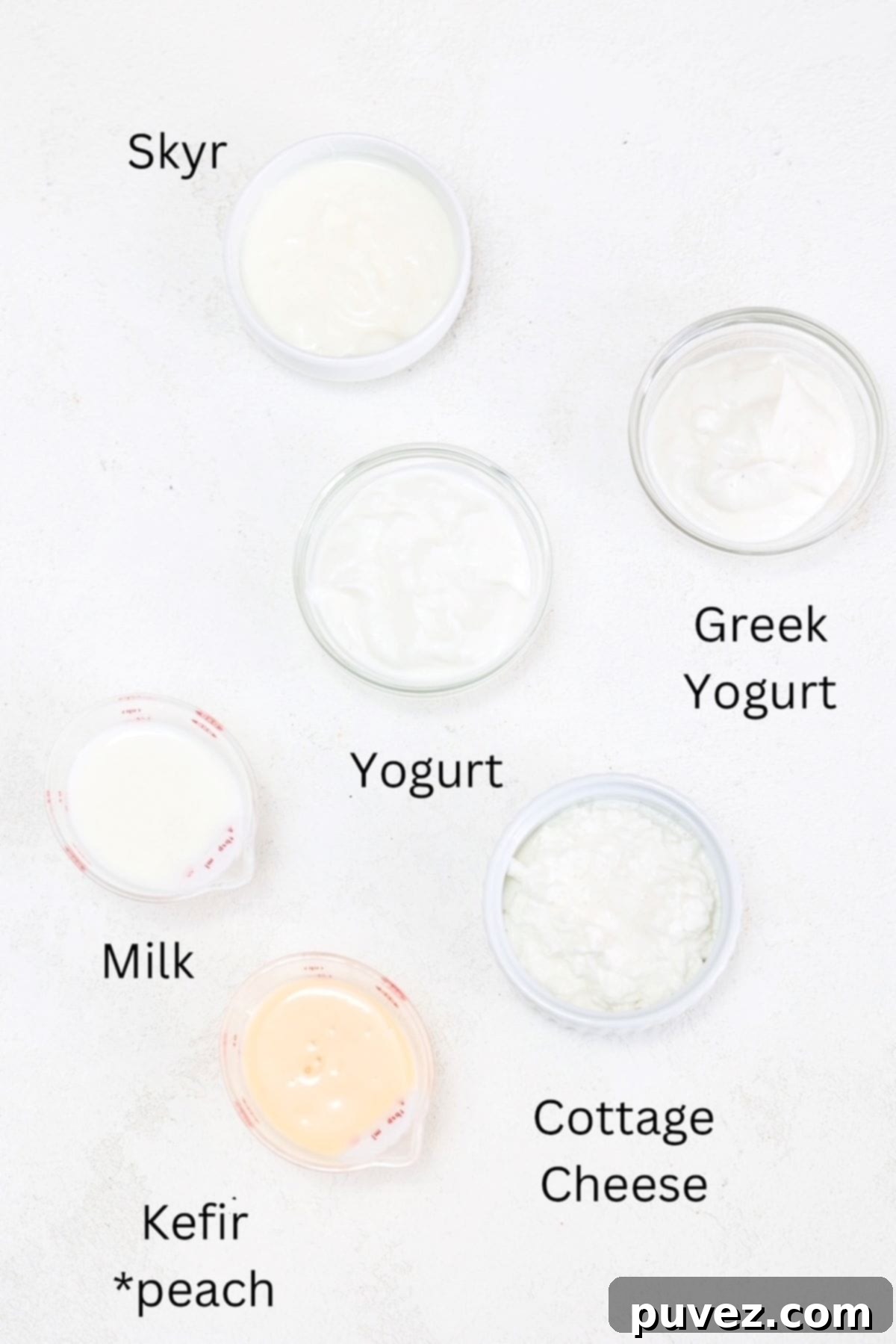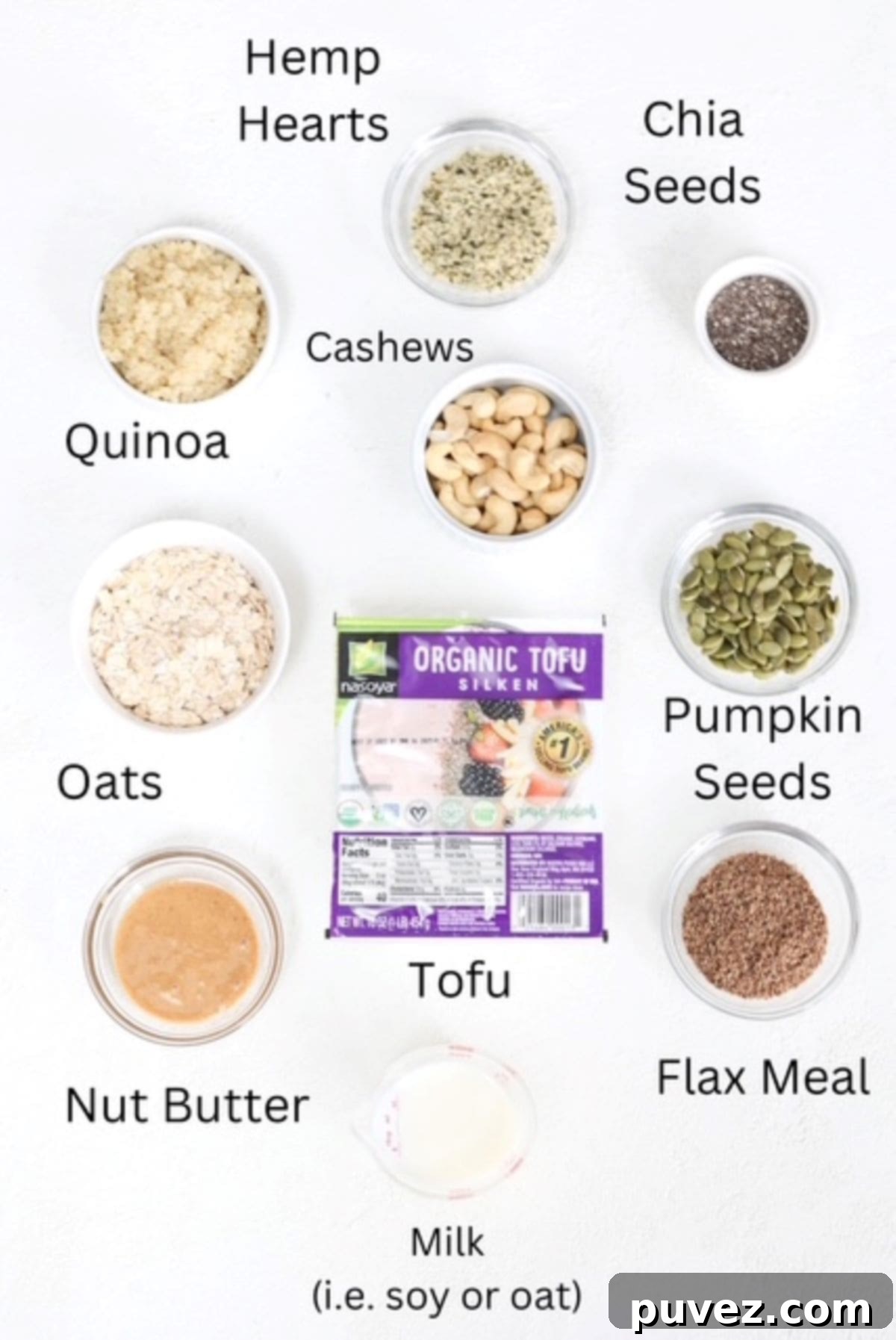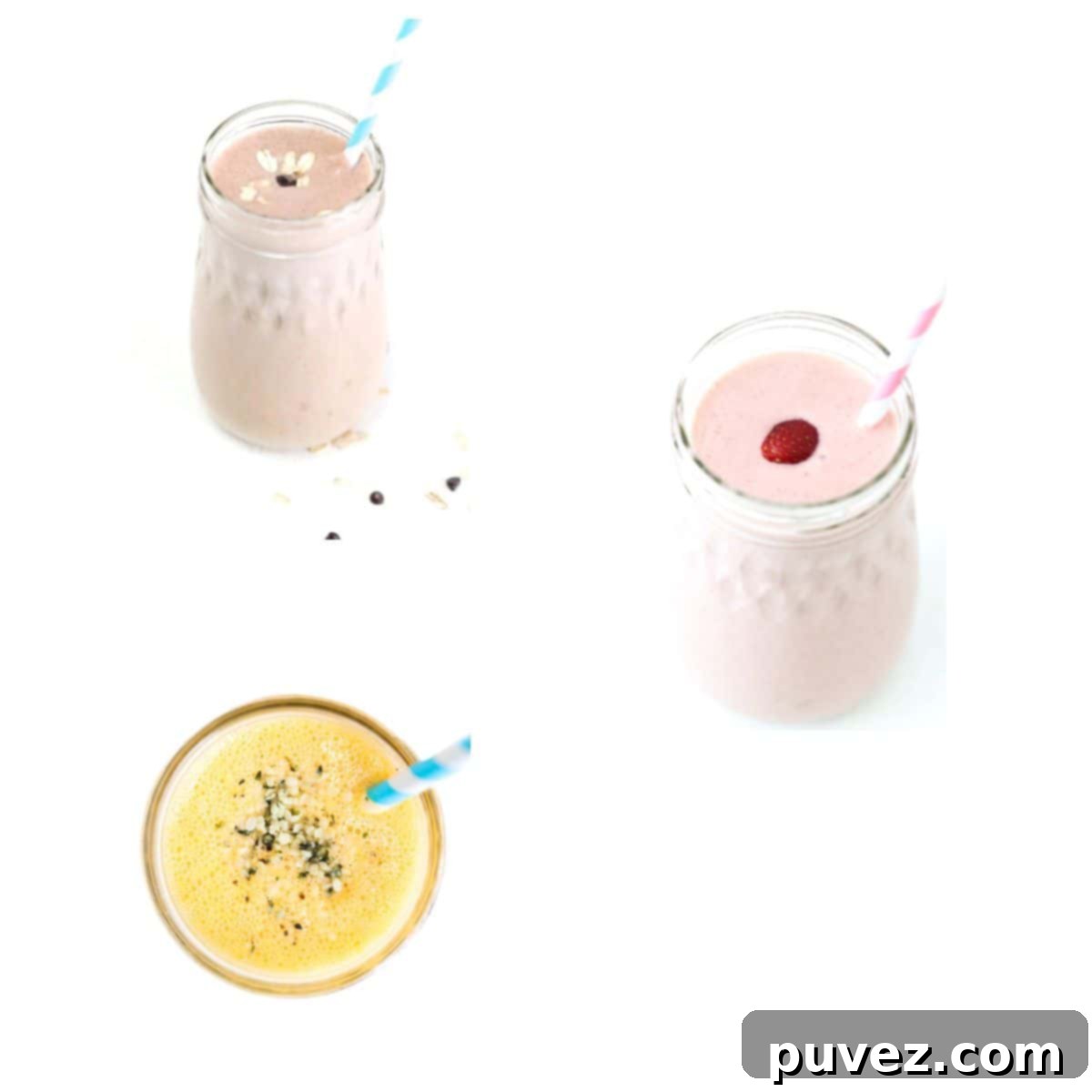Boost Your Smoothies: 16 Easy Ways to Add Protein Without Powder
Are you looking to make your smoothies more filling and nutritious without reaching for a scoop of protein powder? You’ve come to the right place! This comprehensive guide introduces you to 16 easy and natural ways to increase protein in your smoothies, transforming a simple fruit blend or your favorite green smoothie into a powerhouse of nutrition.
Whether you’re aiming for a satisfying meal replacement, need an energy boost to power through your day, or are focused on muscle building, adding natural protein sources to your smoothies is surprisingly simple. Forget the synthetic powders; with a few mindful additions, you can significantly enhance the protein content of your daily blend.

For anyone who has wondered how to naturally incorporate more protein into their blended drinks, this article is designed for you. Whether your goal is to create a more satisfying smoothie to help curb mid-day snack cravings or to support your fitness journey with muscle-building nutrients, I’ll reveal how effortlessly you can elevate the protein content of any smoothie recipe.
As a parent of teenagers, I’ve seen firsthand the growing obsession with ‘everything protein.’ While convenient, pre-packaged protein shakes and powders aren’t the only solution for a protein boost. In fact, many delicious and wholesome ingredients readily available in your local grocery store can do the trick just as effectively, if not more so. We’ll explore a wide array of protein sources that blend seamlessly into smoothies, categorizing them into two main groups: **dairy options** and **non-dairy (plant-based) alternatives**, ensuring there’s something for every dietary preference.
The best part? You don’t need specialty stores to find these protein-rich ingredients. Most are staples in any standard grocery aisle, making it easy and affordable to boost your smoothie’s nutritional profile.
Should I Add Protein to Smoothies?
The decision to add protein to your smoothie largely depends on your overall dietary intake and personal goals. If you’re enjoying a simple fruit smoothie as a side to an already high-protein breakfast, such as a hearty egg casserole paired with breakfast sausages, adding extra protein to the smoothie might be unnecessary. Your meal is likely already meeting your protein requirements.
However, if your smoothie is intended to be a complete meal, like your primary breakfast, a quick lunch, or a post-workout recovery drink, then incorporating one, two, or even three protein sources is highly recommended. Protein helps slow down digestion, keeping you feeling fuller for longer and providing sustained energy, which is crucial when a smoothie is your main source of nourishment.
Dietitian Tip: The Power of Protein-Rich Smoothies
High-protein smoothies are an incredibly convenient and effective strategy for ensuring you meet your daily protein needs. They are particularly beneficial for individuals who struggle to consume adequate protein through solid foods, perhaps due to busy schedules, dietary restrictions, or decreased appetite. A well-balanced protein smoothie can provide essential amino acids, support muscle maintenance and growth, aid in satiety, and contribute to overall health and well-being. It’s a simple yet powerful way to upgrade your nutritional intake with minimal effort.
How to Increase Protein in Smoothies (Dairy Options)
Dairy products are renowned for their high-quality protein content and creamy textures, making them ideal additions to smoothies. They not only boost protein but often add a delightful richness and flavor. Here are some of the best dairy sources to consider:

1. Milk
Simply swapping water or juice for dairy milk as your liquid base is one of the easiest ways to add protein to a smoothie without significantly altering its flavor. Cow’s milk is a complete protein, offering all nine essential amino acids. Regardless of whether you choose skim, low-fat, or whole milk, you’ll benefit from approximately 8 grams of protein per cup. It also provides calcium and vitamin D, making it a foundational ingredient for a nutrient-dense smoothie.
2. Yogurt
Regular yogurt is a fantastic addition for both protein and calcium, lending a pleasant creaminess to your smoothie. While it’s generally less thick and has a milder taste than its Greek counterpart, making its flavor less prominent, it still contributes valuable protein. One-half cup of regular yogurt typically provides around 4.5 grams of protein, along with beneficial probiotics for gut health. Opt for plain, unsweetened varieties to control sugar content.
3. Kefir
Kefir is a fermented milk drink that’s gaining popularity and can be found in the dairy section of most grocery stores. Similar to yogurt, it comes in plain (unflavored) and various sweetened options. My kids used to call it “drinkable yogurt” due to its similar consistency and tangy flavor. Kefir is an excellent source of protein, essential probiotics (which support digestive health), and vitamin D. Brands like Lifeway Kefir typically provide about 10 grams of protein per cup, making it a potent protein booster for your blend.
4. Greek Yogurt
For a significant protein boost and a wonderfully thick, creamy texture, Greek yogurt is often considered a top choice. Plain Greek yogurt, free from added sugars, delivers an impressive amount of protein that helps keep you full and satisfied. A mere one-half cup can add between 9.5 to 12 grams of protein to your smoothie. Its tangy flavor pairs exceptionally well with a wide range of fruits and even greens, enhancing both the nutritional value and mouthfeel of your drink.
5. Skyr
Hailing from Iceland, Skyr is a cultured dairy product with a consistency similar to Greek yogurt, though often even thicker and creamier. It’s renowned for its exceptionally high protein content and can be found alongside yogurts in most supermarkets. Often enjoyed on its own, Skyr is also perfect for smoothies or even a smoothie bowl. For instance, Siggi’s low-fat Skyr packs around 11 grams of protein in just one-half cup, making it an excellent choice for a dense, protein-packed smoothie.
6. Cottage Cheese
Don’t let the idea of cottage cheese in a smoothie surprise you! When blended, cottage cheese seamlessly integrates, providing a smooth, creamy texture without any curds. While its flavor can be noticeable, especially in larger quantities, it’s easily masked by fruits and other strong flavors. I recommend starting with about one-quarter of a cup to see how you like it. Cottage cheese is a fantastic source of casein protein, which digests slowly. Expect to add a substantial 13-14 grams of protein with just one-half cup, along with calcium and other vital nutrients.
How to Increase Protein in Smoothies (Non-Dairy Options)
For those avoiding dairy, or simply looking for plant-based alternatives, there’s a wealth of non-dairy ingredients that can significantly boost your smoothie’s protein content. These options often bring additional benefits like fiber, healthy fats, and unique micronutrients.

7. Chia Seeds
These tiny powerhouses are a phenomenal source of protein, dietary fiber, and essential omega-3 fatty acids, often referred to as healthy fats. Chia seeds absorb liquid and expand, creating a slightly thicker, pudding-like consistency in your smoothie. You can blend them directly into your favorite smoothie or sprinkle them on top of a smoothie bowl just before serving for added texture. Just one tablespoon of chia seeds contributes approximately 2.5 grams of protein, plus a significant fiber boost.
8. Flax Meal (Ground Flaxseed)
Flax meal is simply ground flaxseed, and it’s a fantastic addition to any smoothie. While whole flax seeds can be added, ground flaxseed (or flax meal) blends more smoothly and allows for better absorption of its nutrients. Beyond its protein content, flaxseed is an excellent source of soluble and insoluble fiber and omega-3 fatty acids, beneficial for heart health and digestion. Two tablespoons of flax meal will add approximately 3 grams of protein to your blend, along with a mild, nutty flavor.
9. Rolled Oats
Oats are a wholesome whole grain that adds both protein and a significant amount of soluble fiber to smoothies, helping to create a creamy texture and keep you feeling full. My son loves adding oats to his peanut butter banana oatmeal smoothie for an extra boost. While it may not seem like a huge amount, a quarter-cup of rolled oats contributes about 3 grams of protein, and every gram adds up! *Important note: Always use rolled or quick oats for smoothies; uncooked steel-cut oats do not blend well and can be difficult to digest raw.
10. Seed and Nut Butters
Adding a generous spoonful of your favorite nut or seed butter is a delicious and effective way to increase both the protein and healthy fat content of your smoothie, making it more satisfying and calorically dense. Options like peanut butter, almond butter, cashew butter, or sunflower seed butter (for nut-free alternatives) are perfect. Both peanut butter and almond butter typically add around 4 grams of protein per tablespoon, while sunflower seed butter offers approximately 2.5 grams of protein per tablespoon. These butters also contribute a rich flavor and creamy texture.
11. Quinoa
You might typically think of quinoa as a savory grain, but cooked quinoa can be an excellent, often overlooked, protein booster for smoothies! This ancient grain is exceptionally rich in protein, uniquely recognized as a complete protein, meaning it contains all nine essential amino acids necessary for human health. When cooked and cooled, quinoa has a relatively neutral flavor and a soft texture that blends seamlessly into smoothies without being detected. Adding just one-quarter cup of cooked quinoa will contribute an impressive 4 grams of protein, plus fiber and various micronutrients.
12. Hemp Hearts (Shelled Hemp Seeds)
Hemp hearts, also known as shelled hemp seeds, are tiny, tender seeds packed with protein, fiber, and healthy omega-3 and omega-6 fatty acids. They have a mild, nutty flavor that complements most smoothie ingredients. Hemp hearts are particularly protein-dense, providing about 5 grams of protein per tablespoon. When adding them to a smoothie, especially one like my oat milk smoothie, you might notice a light layer of foam on top; this is normal and will usually settle after a minute or two, leaving you with a smooth, nutritious drink.
13. Cashews
Cashews are a wonderful nut for smoothies, adding a delicate creaminess and a subtle sweetness along with their protein. One-quarter cup of raw cashews provides approximately 5 grams of protein. For the smoothest possible texture and to ensure they blend thoroughly without leaving gritty bits, I highly recommend soaking the cashews in water for at least 30 minutes (or overnight) before adding them to your blender. This softening process makes them incredibly easy to incorporate into any smoothie recipe.
14. Pumpkin Seeds (Pepitas)
Pumpkin seeds, also known as pepitas, are small, flat, green seeds that are a powerhouse of nutrition. They are not only a good source of plant-based protein but also rich in beneficial minerals like iron and magnesium. If you’re using raw, shelled pumpkin seeds, soaking them briefly before blending can help achieve a smoother consistency. Two tablespoons of pumpkin seeds contribute a solid 6 grams of protein, along with healthy fats, making them an excellent choice for a nutrient-dense, satisfying smoothie.
15. Soy Milk
Among plant-based milk alternatives, soy milk stands out for its impressive protein content, making it an excellent choice for a dairy-free protein boost. A single cup of fortified soy milk typically provides around 7 grams of plant-based protein. This is significantly higher than most almond, oat, or coconut milks, which often contain minimal protein. Soy milk also boasts a creamy texture that blends beautifully into smoothies, providing a neutral base that lets your other ingredients shine.
16. Silken Tofu
Tofu, a versatile plant protein made from soybeans, might seem like an unusual smoothie ingredient, but silken tofu is a game-changer. Its incredibly soft, smooth consistency blends effortlessly into smoothies, adding a luxurious creaminess without altering the flavor significantly. It’s an ideal choice for creating rich, non-dairy, protein-packed smoothies. In fact, I often use it to make a creamy non-dairy smoothie. A half-cup serving of silken tofu provides a substantial 9 grams of protein, along with calcium and other beneficial nutrients.
Helpful Tips for Crafting Your Protein-Packed Smoothies
- Prioritize Flavor: Remember that taste matters most! There’s no benefit in packing a smoothie with protein (or any other ingredient) if you don’t genuinely enjoy drinking it. Experiment with combinations that appeal to your palate.
- Start Small, Experiment Gradually: When introducing new protein-rich foods to your smoothies, begin with a small amount and add one new ingredient at a time. This methodical approach allows you to discern what flavors and textures you prefer and which ones might not be to your liking.
- Consider Your Liquid Base: The type and amount of liquid you use can drastically change the nutrient profile and consistency of your smoothie. Milk (dairy or soy) will add more protein than water or juice, while frozen fruits will yield a thicker consistency.
- Consult Nutrition Labels: Product formulations are constantly evolving. Always refer to the specific Nutrition Facts Label on the products you purchase. This ensures you have the most accurate information regarding protein content and other nutrients, allowing you to tailor your smoothies precisely to your dietary needs. The protein values provided in this article are general estimates and should be confirmed with the labels of your chosen brands.
- Invest in a Good Blender: A powerful blender can make a huge difference, especially when incorporating denser ingredients like oats, nuts, or seeds, ensuring a smooth, lump-free consistency.
- Balance Your Ingredients: Aim for a good balance of protein, healthy fats, fiber, and carbohydrates to create a well-rounded and satisfying smoothie.
Questions You May Have About Protein Smoothies
The ideal protein content for a smoothie varies significantly based on individual protein needs, your daily dietary intake, and personal taste preferences. For instance, an athlete or someone replacing a meal might aim for 20-30 grams or more, while a snack smoothie might only need 10-15 grams. Some smoothies, especially simple fruit-only blends, might have almost no protein, while highly fortified ones can exceed 60 grams per serving. It’s important to align the protein content with your personal health goals and how the smoothie fits into your overall eating plan.
Yes, you can freeze high-protein smoothies for future consumption, which can be a great meal prep strategy. However, be aware that the texture may change upon defrosting. Smoothies, especially those made with yogurt or avocado, can become a bit grainier or less creamy once defrosted. To minimize this, you can freeze smoothies in ice cube trays and then blend the cubes with a splash of liquid when ready to drink. This helps maintain a better consistency. Always store in an airtight container to prevent freezer burn and consume within a few weeks for best quality.
Proteins are fundamental macronutrients, composed of amino acids that perform a vast array of critical functions throughout the body. Beyond their well-known role in helping to maintain and build lean body mass (muscle), proteins are essential for enzyme production, hormone regulation, immune function, and repairing tissues. Moreover, consuming adequate protein with meals significantly enhances satiety, helping you feel fuller and more satisfied for longer, which can be beneficial for weight management. If you’re unsure about your specific daily protein requirements, consider consulting a Registered Dietitian. Remember that most weight-based protein recommendations use kilograms, not pounds; there’s a substantial difference: 2.2 pounds equals 1 kilogram (kg).
More High-Protein and Smoothie Inspiration
- High Protein Smoothie Bowl
- High Protein Pancakes
- Fruit Smoothies without Yogurt
- How to Pick a Ripe Pineapple
Delicious Smoothie and Smoothie Bowl Recipes
- Best Banana Strawberry Peanut Butter Smoothie
- Easy Strawberry Banana Smoothie Bowl
- Blue Spirulina Smoothie Bowl
- Island Green Tropical Smoothie
Did you find this post on how to increase protein in smoothies helpful? I certainly hope so! Please let me know your thoughts or your favorite protein-boosting trick by commenting below!
And don’t forget to follow me on Instagram and Pinterest for more easy recipes and practical nutrition tips!
